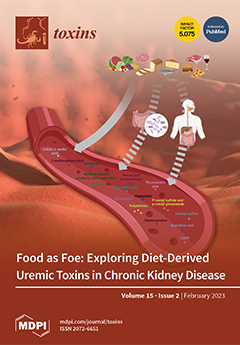The genus
Amphidinium has been the subject of recent attention due to the production of polyketide metabolites. Some of these compounds have shown significant bioactivities and could be related to species interactions in the natural benthic microenvironment. Among these compounds, amphidinols (AMs) are
[...] Read more.
The genus
Amphidinium has been the subject of recent attention due to the production of polyketide metabolites. Some of these compounds have shown significant bioactivities and could be related to species interactions in the natural benthic microenvironment. Among these compounds, amphidinols (AMs) are suspected to be related to fish kills and probably implicated in ciguatera symptoms associated with the occurrence of benthic harmful algal blooms (bHABs). Here, we present the first report of a variety of AMs produced by cultured strains from several species from the Mexican Pacific, the Gulf of California, and the Gulf of Mexico. Through ultra-high performance liquid chromatography coupled with tandem mass spectrometry (UHPLC-MS/MS), ten previously known AMs (AM02, -04, -05, -06, -07, -09, -11, -14, -15, and -17), four recently reported AMs (N7, N8/N9, N12, and N13), and three new variants (U1, U2, and U3) were identified. Of the twelve analyzed
Amphidinium cultures, five were not AM producers, and the cell quotas of the remaining seven strains ranged from close to nondetectable to a maximum of 1694 fg cell
−1, with many intermediate levels in between. The cultures from the Mexican North Pacific coast produced AMs in a higher quantity and variety than those from worldwide locations. This is the first study of AMs from Mexican
Amphidinium strains, and our results confirm the relevance of continuing the investigation of the genus bioactive metabolites.
Full article






